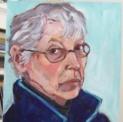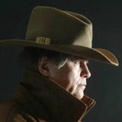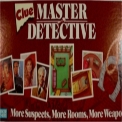Monday, July 26: The Scribbler
I live in Los Angeles, but my father lives in San Antonio. The other day, I got a phone call from him—he’d been cleaning out a closet in his home and come across a box full of comic books. I had bought them back in the 1970s, and he wanted to know if I wanted him to send them to me. “Sure,” I said. “Who knows? Maybe I can sell some of them.”
The box arrived a few days ago. Some of the comics may have some slight interest for collectors, but the real treasure was several papers I had written while in college. I reproduce one of them here, written for a course I took in 1978 called “The Philosophy of Art”, which was taught by Prof. Nikil Bhattacharya, Ph.D., who apparently is still on the faculty at the University of Texas San Antonio. He is one of the two or three most intelligent men I ever met.
I wrote the paper in the form of a conversation between three real people. Frances Keene was in charge of the humanities program at the Mannes College of Music in New York when I was a student there between 1974 and 1976. Joseph DeClementi was a friend of mine from Staten Island, not a musician, but he was a profound aesthete and a deep intellectual and had a rapier wit. I chose the format as a joke, since Plato’s works are all presented as dialogues, and I knew that Prof. B. would enjoy the gag. He gave me an A-/B+ for the paper.
Thirty plus years later, I’m surprised that the essay-in-the-form-of-a-short-story stands up as well as it does, but I am reminded of what an insufferable snot I could be in college. All right, I know what you’re thinking: What do you mean, in college?
Well, here it is, one of the works of my callow youth. But it wasn’t the pick of the litter.
One of the college manuscripts was an actual short story. I’ll fill you in about that later.
INTERMISSION
a semi-serious consideration
of some insoluble problems, or;
Perhaps if I Painted the Piano . . .
by James Lincoln Warren
Christian charity has its demands; suffice to say the performance was less than adequate. Joe DeClementi, who represented the visual arts in the immediate circle of my friends, blissfully drew Artistic Shapes on the back of his program, ostensibly insensitive to the Pinocchio at the piano. My attention shifted from him to the ingenue at the keyboard (briefly introducing images of French diction lessons, primitive attempts at graceful ballet, etc.) and back to the audience.
Frances Keene, the matriarch of the humanities at the Mannes College, either sat transfixed or asleep. I looked briefly at my watch. Diplomacy requred me to stay at least until the intermission, but a fictive appointnent would save me from the agony of hearing the poor girl struggle with the Schubert B-flat posthumous. The last couple of notes gave a sense of finality to an otherwise incoherent rendition of the Schoenberg Op. 28.
I briefly tapped the tips of my fingers together in polite if cynical applause, and gratefully wandered into the foyer. Joe stifled a yawn and followed.
“Well, Warren,” Ms. Keene greeted me with her approach, “what do you think?’
“Hardly inspiring.”
“There’s no life to the performance.” Joe offered. “I don’t think she understands the composers, if indeed she understands the piano.”
“Poor thing,” Ms. Keene said. “She’s really not very good, although she has a facile technique.”
“She’s simply not involved in the music,” I said. “She’s so literal minded that she’s playing nothing but notes. I sense a lack of understanding in her with regard to the score.”
“With regard to the score or with regard to the music?” Ms. Keene questioned.
“The music, I guess,” I replied. “She can certainly read music. In fact she’s an excellent sight-reader. It’s just that her performance is very shallow.”
“That suggests that the music is not the score,” Joe said. “What is the score, then? A medium for the music, a notation for the performance?”
“Or is the performance a medium for the score ?” Ms. Keene asked. “I can’t help but think that the score is inherently superior to her performance of it.”
I laughed. I’m usually not very eager to leap into a discussion that I know will expose my intellectual shortcomings, but Joe and Frances Keene are good company, so I lowered my defenses and leapt into the fray.
“Let’s try this: the score is a representation of composer’s intention, a symbology developed for the notation of a musical piece that initially exists as the composer’s conceptualization of sound. A performance is an attempt to convert the representation, or score, into a presentation of the composer’s conceptualization.”
“And a performance’s success is limited by the shortcomings of musical notation and the recreative abilities of the performer. Different musical personalities have different understandings: two actors read the same line completely differently, but the inherent meaning of the words is constant.” As Joe finished speaking, he drew on his cigarette and graced us with one of his secretive, enigmatic smiles.
“DeClementi, you’re a painter,” said Ms. Keene. “What do you think the artistic status of a photograph of a painting is? Take, for example, the Goyas at the Metropolitan Museum currently on loan from the Prado? I’m sure you’ve bought the catalogue.’
Joe’s smile widened. “A representation of a representation? I see what you’re driving at. of course, seeing a photo of a painting is not seeing the painting. But if it’s a good photograph, you may have a good photograph. Surely photography is an art in its own right.”
“That begs the question,” I said, happy to be on the offensive for a change. “Is the photograph a valid piece of art because of the painting’? I’d rather have a mediocre shot of a da Vinci than a perfect one of a Warhol.”
“Would you rather have a mediocre performance of a Beethoven symphony or a polished performance of a Liszt tone-poem?”
“That’s not a fair analogy—”
“Is there such a thing as a proper analogy between forms of art?” Ms. Keene asked. “Oh, I know the common ones: Beethoven as Michelangelo, Varèse as Calder, Debussy as Mallarmé. But each of the arts has conventions that make it independent. Is it possible to speak of ‘performing’ a work of visual art? I’m speaking of painting and sculpture, and the like.”
“To leave dance in the air,” I mumbled, over pleased at my own cleverness.
“When an artist looks at a painting, he’s intensely aware of each brushstroke,” said Joe. “In that sense, he ‘performs’ the creation of the painting in his mind. But he doesn’t actually perform it.”
“But if you’re not a painter?” I asked. “I received my one and only painting lesson last summer. When I look at a van Eyck, my response is: how did he do that? Is my appreciation of van Eyck lessened because I don’t understand his technique?”
“You’ve always maintained Bach couldn’t be appreciated completely without the study of seventeenth century counterpoint. I would say, yes, you are incapable of appreciating van Eyck as much as I do.”
“Joe, before now you’ve always said that you could appreciate Bach better than many musicians (and I may site tonight’s performer as an example). Perhaps the same is true of my appreciating van Eyck as much as I do.”
By this time the lights had flashed twice. Ms. Keene was frankly amused, but obviously pleased that we had taken it upon ourselves to consider these questions. She squeezed my arm and said, “Well, Warren, I hope you and DeClementi reach a consensus. Duty calls and I must back to the hall.”
She took her leave. I looked across at Joe.
“So now what? Do we continue?”
He crushed the life out of his cigarette. “We’re operating under a fixed system of assumptions about the nature and dynamics of art. Representation, presentation, performance . . . we throw these words around without being confident as to what exactly they mean or how they work. I think I’d better think about it.”
“Is there nothing to be done ?” I asked.
“Let’s get the train down to Bleecker Street and get drunk.”
“Ah! How Bohemian . . . how . . . artistic!”
“Shut up,” he said, “or you’re buying.”
We left.





















James, this will tell you everything you need to know about me: All through your incredible post I kept thinking “which comic books?”
One of the differences that learning to play instruments relatively late in my life has made is this: I hear music differently. I recognize dissonance and harmonics and such in ways I never had before, even on instruments I don’t know how to play. Seeing the brushstrokes, so to speak.
James, I’m glad I sent my column for this week in before I read this, because there is a certain similarity, although not in topic.
Great fun this was.
James,
What fun. To demonstrate my own insufferable intellectual snobbery, I’ll quote Ludwig Wittgenstein on the topic (Tractatus Logico-Philosophicus):
4.014 A gramophone record, the musical idea, the written notes, and the sound-waves, all stand to one another in the same internal relation of depicting that holds between language and the world.
They are all constructed according to a common logical pattern.
(Like the two youths in the fairy-tale, their two horses, and their lilies. They are all in a certain sense one.)
By the way, I recently sent you an email through the web form at CB. Unfortunately I didn’t keep a copy for myself, so now I have no way to reconstruct what I proposed.